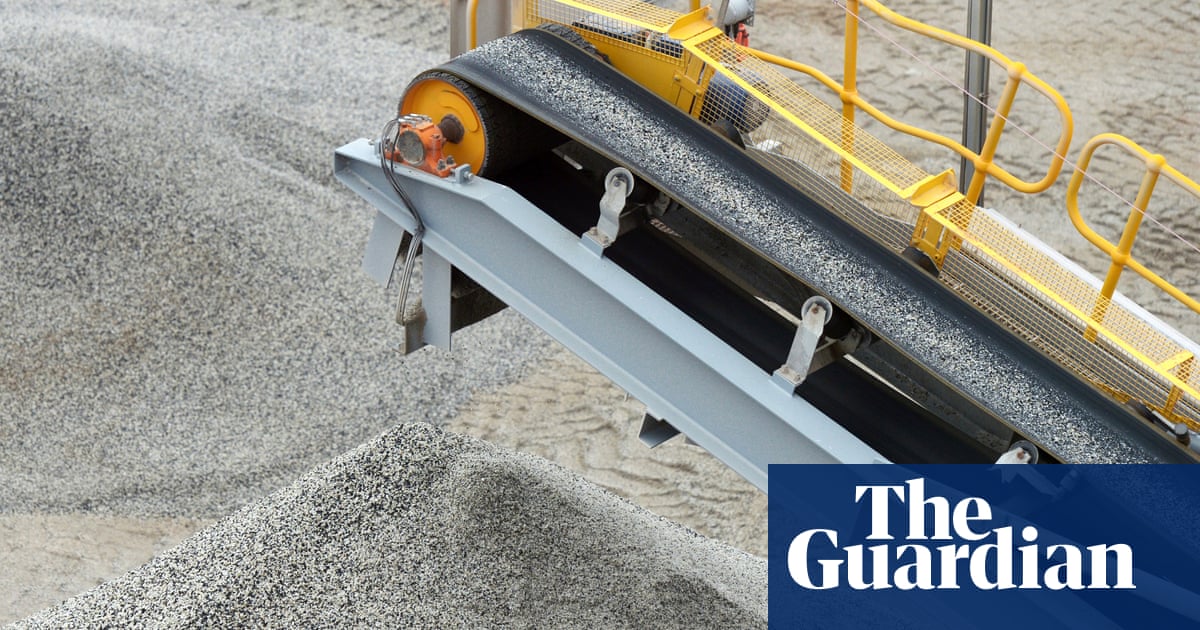Weeks after China retaliated against Donald Trump’s tariffs bysuspending exportsof a range of rare-earth elements and related high-powered magnets, Ford was forced topause a production linein Chicago.
Days later, executives from other major carmakers, including General Motors and Toyota,told the White Housetheir suppliers faced an impending shortage of necessary materials that could shut assembly lines.
The speed of the fallout shows just how reliant the world has become on China’s mineral supply chain and its production of rare-earth magnets , used in everything from wind turbines and medical devices to combustion and electric motors, and ballistic missile guidance systems.
The Albanese government believes it can help break China’s dominance, but experts say the challenge is enormous.
Prof John Mavrogenes, from the Australian National University’s research school of earth sciences, says the government needs to dramatically boost its investment in skills, education and technology if it wants to develop the domestic capability to manufacture rare-earth products, namely magnets.
“The question over who can deal with the processing and the making of magnets is a really big one, and quite hard to get your head around because we’ve let China just take that business over,” says Mavrogenes.
“The question is capability. Who’s ready to ramp up if we need to? One country that I know isn’t ready is Australia.
“We need so many metallurgists and chemical engineers, and we need them tomorrow. We probably need 10, 20, 50 times more than we’re producing.”
China is a large producer of rare earths and has near-complete control over the refining processes needed to make the minerals useful. It produces about 90% of rare-earth magnets, completing its control of the supply chain.
It has become a very efficient, cost-effective provider of rare-earth materials, although given some of the historical environmental damage caused by their extraction and processing, it has paid a price.
Sign up for a weekly email featuring our best reads
Economies around the world have benefited from China’s rare earths industry. The system seemed to work, until it didn’t.
In 2010, China starved Japan’s hi-tech manufacturing industries by halting shipments of rare earthsfor about two months, after a dispute over a detained Chinese fishing trawler captain.
In late 2023, China formalised a ban on the export of rare-earth separation technologies.
Two months ago, China placed export restrictions on seven strategically chosen rare earths and the end product, magnets.
While the recent curbs were sparked by Trump’s tariffs, Beijing applied the export controls to all countries. It has implemented a new export permit system, choking the world of supply.
Rare-earth magnets need a lot of two light rare-earth elements, neodymium and praseodymium, which are not subject to China’s export curbs.
But more powerful, heat-resistant magnets used in automotive and defence industries tend to require dysprosium or terbium, which are called heavy rare earths because of their atomic weights.
Dysprosium and terbium are on China’s list of suspended rare earths, as is samarium, which is also used in hi-tech applications.
Until recently, the desire to develop a rare earths sector has been pitched by governments as a means to fuel the transition to clean energy technology and electric vehicles.
Sign up toFive Great Reads
Each week our editors select five of the most interesting, entertaining and thoughtful reads published by Guardian Australia and our international colleagues. Sign up to receive it in your inbox every Saturday morning
after newsletter promotion
But now, it’s also taken on the pressing aim of shoring up supplies of materials required for national interests, including defence.
Australia, rich in resources, is seen as a natural competitor to China that could break into its rare-earths supply chain.
The Albanese government has openly discussed this desire forwell over two years, and officials have crisscrossed the country, from Dubbo in New South Wales to Western Australia and Northern Territory, offering grants, funding and other assistance in order to develop bona fide domestic processing capabilities.
Notably, the government has backed the development of Iluka’s Eneabba project in WA, which is designed to come online in 2027 and produce several rare-earth oxides, including dysprosium and terbium.
Iluka’s chief executive, Tom O’Leary, told shareholders last month the “current industry is unsustainable, owing to China’s monopoly position and approach”.
“It is a fact that rare earths are among very few metals where China has demonstrated a preparedness to withhold supply to achieve political or strategic objectives,” O’Leary said.
Another Australian company, Lynas, is a step ahead, given it has some rare-earths processing capabilities out of Kalgoorlie. It relies on further refining at its factory in Malaysia, which recently became the first to separate heavy rare-earth elements, primarily dysprosium and terbium, outside China.
The Labor government has also proposed setting up a strategic stockpile of critical minerals. While the details of this plan are scant, such a stockpile, by building up supplies, could provide pricing certainty for projects affected by the current monopoly market.
The government’s various funding announcements show that Australia is focusing on the initial extraction and refining of rare earths, but not on the process of turning that material into metals and, in turn, manufacturing magnets.
There are mixed views on whether that is the right approach, given the strategy falls short of developing an end-to-end rare-earths supply chain in Australia, independent of China, as some had hoped for.
There has also been limited discussion of the potential for magnet recycling in Australia.
Rowena Smith, the chief executive of Australian Strategic Materials, says it is more realistic for Australia to partner with overseas magnet producers outside China than to quickly develop capabilities to produce magnets.
“The opportunity for Australia is to play to our strengths upstream and integrate with allied partners into those emerging magnet manufacturers,” says Smith.
“It would be ambitious to get this supply chain up rapidly in Australia, because you need every piece of the supply chain to come online simultaneously.”
